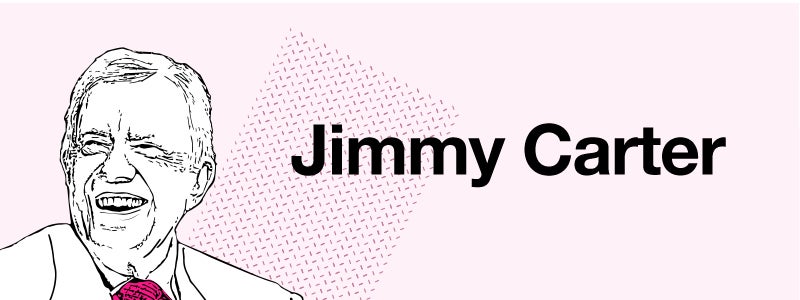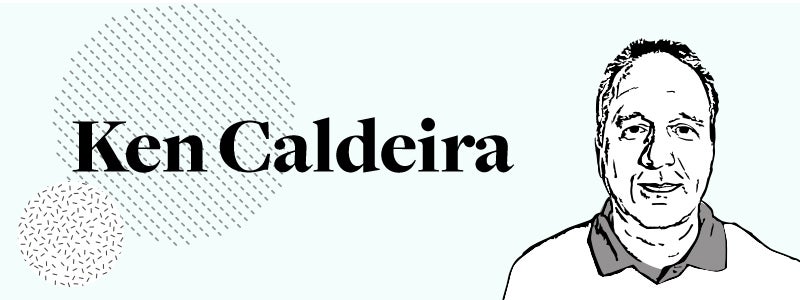We need to make the planet a better place to live, which means ensuring that everyone has an equal chance to survive and thrive no matter where they’re born.
When I was in my 20s and early 30s, I was fanatical about software. By “fanatical” I mean that I was so focused on my vision of putting a computer on every desk and in every home that I gave up a normal existence. I didn’t take vacations or weekends off. I wasn’t interested in getting married. (Obviously, that changed when I met Melinda!) My colleagues and I at Microsoft took tremendous pride in being the first to arrive at work and the last to leave. It was an incredibly fun chapter of my life.
Now, much of my work involves learning from other fanatics. They are the scientists in search of new vaccines. Teachers working tirelessly to perfect their craft. Engineers dreaming up crazy ideas for new sources for clean energy. Being able to learn about their work and help them realize their dreams has opened up an amazing new chapter in my life.
Looking back over 2016, I had the opportunity to meet with many gifted individuals trying to change the world. Their hard work and dedication fuel my optimism that our world’s best days are still ahead of us. Here are a few of my favorite fanatics. I hope they inspire you just as much as they have me.

This fall Melinda and I were lucky enough to go to Plains, Georgia and spend an evening with Jimmy and Rosalynn Carter. At 92, Jimmy Carter hasn’t slowed down. For most, being President of the United States would be the high point of their public lives. For Jimmy Carter, it was just the start of a long career dedicated to human rights causes. He’s won the United Nations Human Rights Prize and the Nobel Peace Prize. He started the Carter Center, which continues to work on improving the health of the poorest, including ending guinea worm. He’s an author. (I just read his book, A Full Life: Reflections at Ninety, a strikingly honest memoir about his private and public life.) He continues to teach as well. Every month, he and Rosalynn go to Emory University, where he lectures in the departments of global health, political science, theology and holds open Q&A sessions with students. At home, he keeps busy too. During a tour of his home, Jimmy showed Melinda and me how he spent the last few years rebuilding the house himself. He also shared some paintings he’s done—in his spare time! His life should be an inspiration to all of us.

One of my favorite new phrases I learned in 2016 is “nerd farmer.” That’s how Nate Bowling, Washington State Teacher of the Year, described his role in the classroom. “I joke about being a nerd farmer. I’m trying to cultivate a kind of scholarship in students, and a passion for learning. So I bring passion to the classroom, and they see that and rise to the occasion,” he told me during our meeting in June. Nate teaches AP Government and AP Human Geography at Lincoln High School in Tacoma. Half its students are African-American or Hispanic and more than 70 percent are eligible for free or reduced-price lunch. Many students at high-poverty schools like Lincoln struggle and do not graduate ready for college or high paying jobs. Thanks to Nate and his colleagues, Lincoln is bucking that trend. It has a graduation rate of 80 percent, above the average for Washington schools with similar demographics, and 40 percent of its students are taking Advanced Placement (AP) classes. Nate is a great example of what it takes to be an effective teacher. He works hard at his craft, always searching for ways to make a subject relevant for his students. For example, he uses Star Wars to help explain Civil Rights. It’s pretty amazing. “All kids can learn if they have the support,” he says.

During my visit to India in November I had a chance to catch up with Nandan Nilekani, one of India’s best-known entrepreneurs, philanthropists, and thinkers. We met more than 20 years ago when he was helping to start Infosys, a technology and consulting corporation. I was impressed with him then and continue to be amazed by how he has lent his entrepreneurial passion to philanthropy and public service. In 2009, he left Infosys to serve as the chairman of India’s new identity card system, Aadhar, which has provided biometric IDs to more than one billion people. Now, Nandan is dreaming up ways to use this platform to help improve the lives of the world’s poorest. He and his wife, Rohini, have set up EkStep, a non-profit that uses smartphone-based apps to help children with early learning. Nandan and I share a common optimism about the potential of the digital revolution in India to improve lives through access to savings accounts, health records, and education. We had a great conversation with the Financial Times during my visit. And to learn more about Nandan’s vision for India’s future, you can read his book, Rebooting India: Realizing a Billion Aspirations. “We are much better off dreaming, taking risks, and trying to realize a billion aspirations; at best we risk falling flat on our faces,” he writes. “Far more egregious, and most dangerous to our country, is going about ‘business as usual,’ leaving a billion voices unheard and a billion frustrations unresolved.”

There’s an African proverb often cited at our foundation: “If you want to go quickly, go alone. If you want to go far, go together.” That was the vision behind Dr. Ana Mari Cauce’s incredible effort at the University of Washington this year to unite researchers and resources from the university and beyond to help improve the health and well-being of people around the world. Dr. Cauce, the president of the University of Washington, saw the need to help the university’s medical school, school of public health, the Institute for Health Metrics and Evaluation, environmental scientists, and dozens of other partners to collaborate together more effectively around common health-related goals. The effort, called the Population Health Initiative, has incredible potential to unlock the power of health research and data for the benefit of all. “Being truly healthy means far more than simply being free from ailments and afflictions. When we assess health, we must also take into account the many other factors that affect well-being—poverty, discrimination, climate change and violence, to name just a few,” Dr. Cauce said during her announcement of the initiative. In October, our foundation awarded a $210 million grant to the university to fund the construction of a new building to house the Initiative and help foster greater collaboration. I’m eager to see what this visionary effort will mean for improving health worldwide.

I spent a lot of time in 2016 meeting with some amazing scientists and researchers on topics ranging from malaria to microbes. In the field of energy, one of my best teachers has been Ken Caldeira. A climate scientist at the Carnegie Institution for Science, Ken investigates issues related to climate, carbon, and energy systems. His official job title requires him “to make important scientific discoveries.” And he has. He is a pioneer in exploring the impact of human activity on our climate. His experiments have given us the strongest evidence to date that ocean acidification is already harming coral reef growth. I first met Ken a decade ago and we’ve met a few times each year for learning sessions about climate change and energy. He’s a brilliant teacher who is always patient when I ask lots of questions. What I appreciate most about his teaching style is how he is able to explain complex ideas in ways that are accessible to anyone. You can see this at work on his blog, where he uses the challenge of managing his office’s shared coffee pot as a way to explain how we could fight climate change. “We will not solve the climate problem by teaching people to be less selfish,” he writes. “If we have to wait until people learn to make self-sacrificing snap judgments before we can solve the climate problem, we will be waiting until it is too late.”




